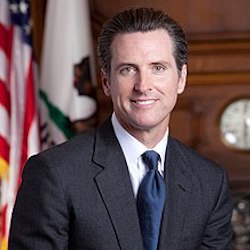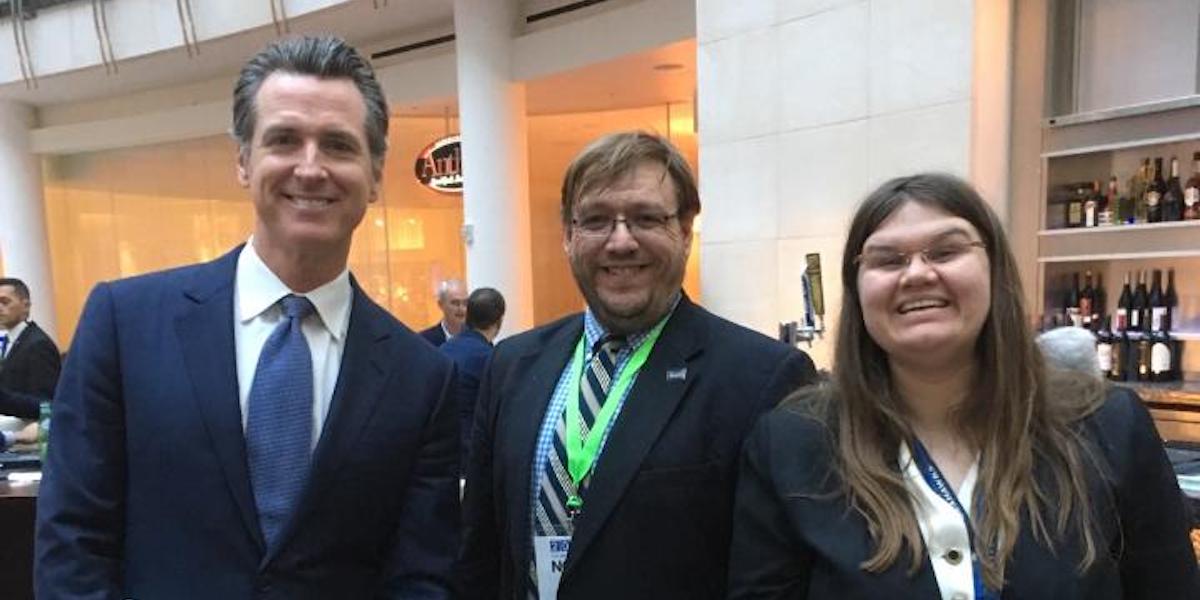
Washington, D.C., April 2 – Nationwide 111,804 people with disabilities got new jobs last year, including 19,745 new jobs for Californians with disabilities. The Golden State now ranks 35th among the 50 states in terms of the employment rate for people with disabilities. The newly published 2018 Annual Disability Statistics Compendium shows there are 1,980,677 working-age (ages 18-64) people with disabilities living in California. Out of that number, 721,536 have jobs. That means California has a disability employment rate of 36.4 percent.
Further analysis by the nonpartisan advocacy group RespectAbility shows that California’s disability employment rate has slowly increased over the past two years. However, even as more and more people with disabilities are entering California’s workforce, other smaller states such as North Dakota, South Dakota and Utah have higher employment rates for their citizens with disabilities.
The economic exclusion of people with disabilities is reflected in the stories that Hollywood tells. According to a recent report by The Media, Diversity, & Social Change Initiative at USC, only 2.7 percent of all speaking or named characters in film were shown to have a disability in 2016. According to GLAAD’s reporting, less than two percent of characters on television have a disability.
The disability community in California is hopeful that newly elected Governor Gavin Newsom will prove himself to be a strong ally in the Governor’s mansion. Diagnosed with dyslexia at age five, Newsome has been open about his experiences with an invisible disability.
California is also home to a range of best practices and programs to empower people with disabilities into the workforce. Project SEARCH is a perfect example of the types of opportunities now open to more and more youth with disabilities in California. SEARCH is a unique, employer-driven transition program that prepares students with disabilities for employment success. In California, new partnerships between the Los Angeles Unified School District, the nonprofit Best Buddies and Kaiser Permanente are having transformative impacts on the lives of young people with disabilities. Nationally and locally, more than 70 percent of Project SEARCH alumni now have jobs.
California has a unique network of Regional Centers, originally established in the 1960s, which provide legally mandated support and services. The state also adopted a Competitive Integrated Employment Blueprint just last year to promote competitive job opportunities for all.
“Clearly California leaders understand the steps needed to increase employment opportunities for those with disabilities,” added Jennifer Laszlo Mizrahi, president of RespectAbility. “But what is also evident from the data is that more needs to be done.”
“Our nation was founded on the principle that anyone who works hard should be able to get ahead in life,” said Hon. Steve Bartlett, current Chairman of RespectAbility, who co-authored the Americans with Disabilities Act when he was in Congress. “People with disabilities deserve the opportunity to earn an income and achieve independence, just like anyone else.”
A National Issue
Beyond California, how is the workforce changing for people with disabilities? What is driving these changes? The answer is simple. According to Vincenzo Piscopo of the Coca-Cola Company: “People with disabilities bring a unique skill set that it is very valuable for companies.” He went on to add, “As it relates to employment and competitiveness in the workplace, we have to stop thinking of disability as a liability and start thinking of it as an asset.”
Brand-name companies such as JP Morgan Chase, Coca-Cola, Ernst & Young, IBM, Walgreen’s, Starbucks, CVS and Microsoft show people with disabilities are successful employees. These companies also know that these workers improve the bottom line. “People with disabilities bring unique characteristics and talents to the workplace,” said RespectAbility President Jennifer Laszlo Mizrahi. “Hiring people with disabilities is a win-win-win for employers, people with disabilities and consumers alike.”
As more companies hire employees with disabilities, conversations are shifting to focus on inclusion. “Disability inclusion is no longer about automatic doors, curb cuts, ramps, and legislation,” says Jim Sinocchi, Head of the Office of Disability Inclusion at JP Morgan Chase. “Today, the new era of disability inclusion is about “assimilation” – hiring professionals with disabilities into the robust culture of the firm.”
According to the Census Bureau, there are more than 56 million Americans living with a disability. Disabilities include visible conditions such as spinal cord injuries, visual impairments or hearing loss and invisible disabilities such as learning disabilities, mental health or Autism.
An Election Issue
Voter research, conducted by RespectAbility, shows how disability issues connect to all aspects of American life. “Fully three-quarters of likely voters either have a disability themselves or have a family member or a close friend with disabilities,” said former Representative and Dallas Mayor Steve Bartlett. “People with disabilities are politically active swing voters, and candidates should take note of the important issues they care about.”
As 2019 moves into 2020 and the political campaign season heats up, continuing job growth for people with disabilities will be a crucial indicator of the health of the American economy.

Be First to Comment